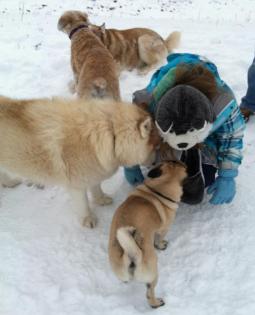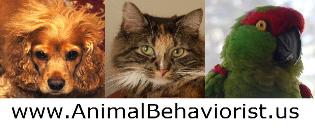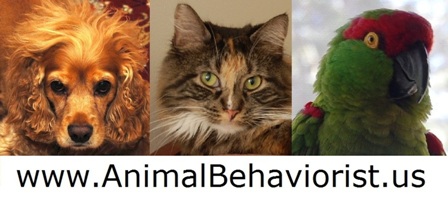Strategies for working with aggression in dogs,
copyright (c) 2021 Frania Shelley-Grielen. All rights reserved.
What does aggressive behavior in dogs look like? To begin with, being
around dogs means seeing and hearing all sorts of canine behaviors; from
play bows and growls and attention seeking barks to warning nips and
bites, especially when dogs are around other dogs. A lot of behavior that
we see is a reaction to what is happening in the environment; canine
communication utilizing body language, actions and vocalizations to get
the message across. Our actions are a huge part of what our dogs are
reacting to. By using positive reinforcement for the behaviors we are
encouraging and ignoring the behaviors we would prefer not to see we
set up our dogs for positive interactions with both human and canine
but what happens when we don’t?
How do you handle an aggressive dog at a doggy day care, in your home or
in the dog park? For starters, is your approach increasing the behavior or
lessening it? If what you are doing is not stopping the behavior you want
to try something else. If you are seeing the behavior getting worse you
definitely want to try something else. If you are seeing displacement
behaviors-other behaviors that are occurring that had not been happening
before (usually a result of the corrective action being taken) then here is
another approach. Review the case history below to see if you can
integrate the methods into your day care or home environment.
What was happening: A three year old female boxer, “Gladys”
(not her real name) was reacting to new entrants to the play area. Whether
dog or human, Gladys would menace the newcomer by nipping and biting.
Some staff would scold Gladys to end the behavior and if that was not
effective, tie her to the wall. Other staff members would grab a slip lead
and tie Gladys to the wall as soon as a new presence entered the play
area. Not surprisingly, Gladys was getting worse and was being blamed
for her “aggression” as if she alone was responsible for it.
What I did: I walked in to the play area alone. Staff picked up on warning
signs as Gladys approached me. She was warned off initially but soon after
jumped and nipped me (shirt sleeve only, no body contact which I
ignored). I retreated out of the area but stayed between the safety fences.
I avoided eye contact with Gladys but interacted with friendly dogs,
in particular, boxers. I then entered the area briefly for intervals of 2-3
minutes and retreated for at least 3 times longer. If Gladys approached
I dropped my eyes or turned away to take pressure off her to respond.
She did rush the gate several times during this step in the process, when
this happened I offered a short (no more than two syllables) verbal
redirection and then dropped my eyes immediately. After 15-20
minutes of this I entered the enclosure and directed staff to distract
Gladys when she noticed me, chasing a ball or enticing her with a high
value toy. Gladys was now not stalking me but still stiff and interested.
When she got close enough to investigate me, we asked familiar staff to
approach her and stroke and praise her for her calm behavior next to me.
After the positive interactions Gladys would retreat and returned to
investigate two more times with staff praising her calm behavior each
time.
How it worked: After less than an hour Gladys was totally relaxed
around me in the enclosure.
Why it worked: Gladys was being punished each time a new individual
(either human or dog) would enter the play area. She was reacting to
both the punishment and the anticipation of the punishment. Punishment
may end a behavior initially but studies show that it is not effective long
term. The amount of punishment has to continually be increased to
avoid habituation (or getting used to it). The animal being punished
usually associates the pain with many signals not just the one behavior
we are trying to extinguish. Look at Gladys; staff body language, stiff
and squared off with a leash in the hand to tie her up would announce
her being withdrawn from attention and the group environment, being
tied up also was associated with new individuals making her reactions
to them even worse. The stress of being punished usually results in
”displacement behaviors” in addition to increased aggression.
Displacement behaviors are basically inappropriate responses as a
result of a conflict and could be anything from excessive barking to
breaks in house training.
Not punishing Gladys and rewarding her for her good behavior made
all the difference. I took the pressure of Gladys initially by not invading
her space when she reacted to my presence, no correction-just literally
ignoring the bad behavior. Staying in close proximity and interacting
with friendly dogs, particularly same breed dogs helped to stimulate
Gladys’ mirror neurons—those parts of the brain that would light up
as if all that friendly interaction was happening to her. Going in and
out of the play area in short repeated increments of time also helped
to desensitize Gladys to our presence. Redirecting Gladys away from
me with a ball kept her moving and redirected her initial energy in a
positive manner. Of course, the most positive move, what did the
trick, was praising Gladys for being calm around a stranger (me).
Key here is working up to it in the steps outlined and setting her up
for success by praising her when she is close enough not to react
negatively. By soliciting Gladys’ attention for praise and petting
when she was calm and close to me she was being mightily reinforced
for good behavior and learning to associate my new and novel
presence with good things happening. Repeat with new people
and dogs several times and she would surely drop the biting and
nipping over praise and petting.
Remember, there is no distance at which it would ever be too far to
praise the aggressive dog for not being aggressive. Setting this dog up
for success means reinforcing the pet's positive body language before
it signals aggressive intent. If you do see that aggressive signal (look
for "hard eye", squaring off, stiffening, freezing, hackles coming up,
pursed lips, etc.) a redirection followed by immediate praise for
execution gets you back on track. Each dog is an individual and
being able to read your particular dog must be learned.
This is a valuable exercise and it works but it must be carried out
by proactive and compassionate handlers who are well versed in
reading canine body language and defusing situations in a positive
and non threatening manner.
This article is an original work and is subject to copyright. You may create a
link to this article on another website or in a document back to this web page.
You may not copy this article in whole or in part onto another web page or
document without permission of the author. Email inquiries to
info@animalbehaviorist.us
copyright (c) 2021 Frania Shelley-Grielen. All rights reserved.
What does aggressive behavior in dogs look like? To begin with, being
around dogs means seeing and hearing all sorts of canine behaviors; from
play bows and growls and attention seeking barks to warning nips and
bites, especially when dogs are around other dogs. A lot of behavior that
we see is a reaction to what is happening in the environment; canine
communication utilizing body language, actions and vocalizations to get
the message across. Our actions are a huge part of what our dogs are
reacting to. By using positive reinforcement for the behaviors we are
encouraging and ignoring the behaviors we would prefer not to see we
set up our dogs for positive interactions with both human and canine
but what happens when we don’t?
How do you handle an aggressive dog at a doggy day care, in your home or
in the dog park? For starters, is your approach increasing the behavior or
lessening it? If what you are doing is not stopping the behavior you want
to try something else. If you are seeing the behavior getting worse you
definitely want to try something else. If you are seeing displacement
behaviors-other behaviors that are occurring that had not been happening
before (usually a result of the corrective action being taken) then here is
another approach. Review the case history below to see if you can
integrate the methods into your day care or home environment.
What was happening: A three year old female boxer, “Gladys”
(not her real name) was reacting to new entrants to the play area. Whether
dog or human, Gladys would menace the newcomer by nipping and biting.
Some staff would scold Gladys to end the behavior and if that was not
effective, tie her to the wall. Other staff members would grab a slip lead
and tie Gladys to the wall as soon as a new presence entered the play
area. Not surprisingly, Gladys was getting worse and was being blamed
for her “aggression” as if she alone was responsible for it.
What I did: I walked in to the play area alone. Staff picked up on warning
signs as Gladys approached me. She was warned off initially but soon after
jumped and nipped me (shirt sleeve only, no body contact which I
ignored). I retreated out of the area but stayed between the safety fences.
I avoided eye contact with Gladys but interacted with friendly dogs,
in particular, boxers. I then entered the area briefly for intervals of 2-3
minutes and retreated for at least 3 times longer. If Gladys approached
I dropped my eyes or turned away to take pressure off her to respond.
She did rush the gate several times during this step in the process, when
this happened I offered a short (no more than two syllables) verbal
redirection and then dropped my eyes immediately. After 15-20
minutes of this I entered the enclosure and directed staff to distract
Gladys when she noticed me, chasing a ball or enticing her with a high
value toy. Gladys was now not stalking me but still stiff and interested.
When she got close enough to investigate me, we asked familiar staff to
approach her and stroke and praise her for her calm behavior next to me.
After the positive interactions Gladys would retreat and returned to
investigate two more times with staff praising her calm behavior each
time.
How it worked: After less than an hour Gladys was totally relaxed
around me in the enclosure.
Why it worked: Gladys was being punished each time a new individual
(either human or dog) would enter the play area. She was reacting to
both the punishment and the anticipation of the punishment. Punishment
may end a behavior initially but studies show that it is not effective long
term. The amount of punishment has to continually be increased to
avoid habituation (or getting used to it). The animal being punished
usually associates the pain with many signals not just the one behavior
we are trying to extinguish. Look at Gladys; staff body language, stiff
and squared off with a leash in the hand to tie her up would announce
her being withdrawn from attention and the group environment, being
tied up also was associated with new individuals making her reactions
to them even worse. The stress of being punished usually results in
”displacement behaviors” in addition to increased aggression.
Displacement behaviors are basically inappropriate responses as a
result of a conflict and could be anything from excessive barking to
breaks in house training.
Not punishing Gladys and rewarding her for her good behavior made
all the difference. I took the pressure of Gladys initially by not invading
her space when she reacted to my presence, no correction-just literally
ignoring the bad behavior. Staying in close proximity and interacting
with friendly dogs, particularly same breed dogs helped to stimulate
Gladys’ mirror neurons—those parts of the brain that would light up
as if all that friendly interaction was happening to her. Going in and
out of the play area in short repeated increments of time also helped
to desensitize Gladys to our presence. Redirecting Gladys away from
me with a ball kept her moving and redirected her initial energy in a
positive manner. Of course, the most positive move, what did the
trick, was praising Gladys for being calm around a stranger (me).
Key here is working up to it in the steps outlined and setting her up
for success by praising her when she is close enough not to react
negatively. By soliciting Gladys’ attention for praise and petting
when she was calm and close to me she was being mightily reinforced
for good behavior and learning to associate my new and novel
presence with good things happening. Repeat with new people
and dogs several times and she would surely drop the biting and
nipping over praise and petting.
Remember, there is no distance at which it would ever be too far to
praise the aggressive dog for not being aggressive. Setting this dog up
for success means reinforcing the pet's positive body language before
it signals aggressive intent. If you do see that aggressive signal (look
for "hard eye", squaring off, stiffening, freezing, hackles coming up,
pursed lips, etc.) a redirection followed by immediate praise for
execution gets you back on track. Each dog is an individual and
being able to read your particular dog must be learned.
This is a valuable exercise and it works but it must be carried out
by proactive and compassionate handlers who are well versed in
reading canine body language and defusing situations in a positive
and non threatening manner.
This article is an original work and is subject to copyright. You may create a
link to this article on another website or in a document back to this web page.
You may not copy this article in whole or in part onto another web page or
document without permission of the author. Email inquiries to
info@animalbehaviorist.us
| Working with aggressive dogs |


fPatMurray
| "If what you are doing is not stopping the behavior you want to try something else. If you are seeing the behavior getting worse you definitely want to try something else. If you are seeing displacement behaviors -other behaviors that are occurring that had not been happening before (usually a result of the corrective action being taken) then here is another approach" |
Maria Gray
| Schedule a consultation |

info@animalbehaviorist.us
212-722-2509 / 646-228-7813
Website copyright Frania Shelley-Grielen
212-722-2509 / 646-228-7813
Website copyright Frania Shelley-Grielen

AnimalBehaviorist.us is a participant in the Amazon Services LLC
Associates Program, an affiliate advertising program designed to
provide a means for sites to earn advertising fees by advertising
and linking to products we recommend on Amazon.com.
Associates Program, an affiliate advertising program designed to
provide a means for sites to earn advertising fees by advertising
and linking to products we recommend on Amazon.com.
Best viewed in
Google Chrome